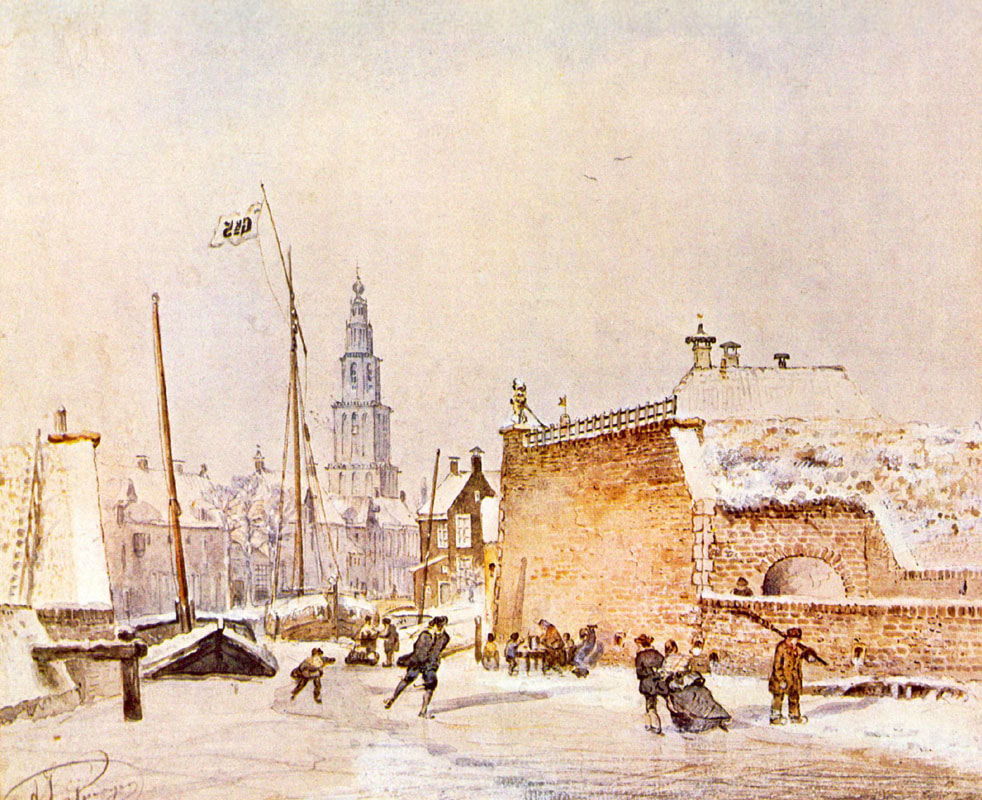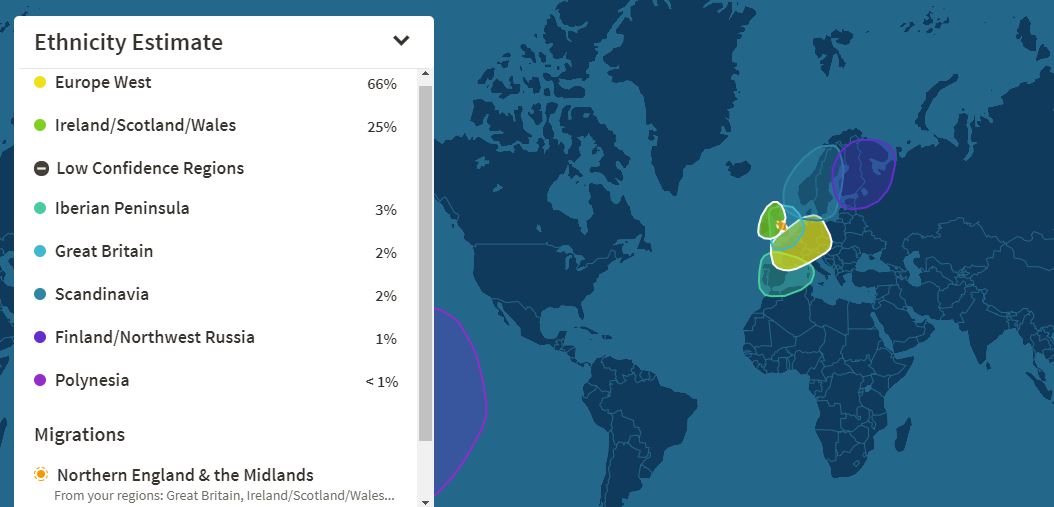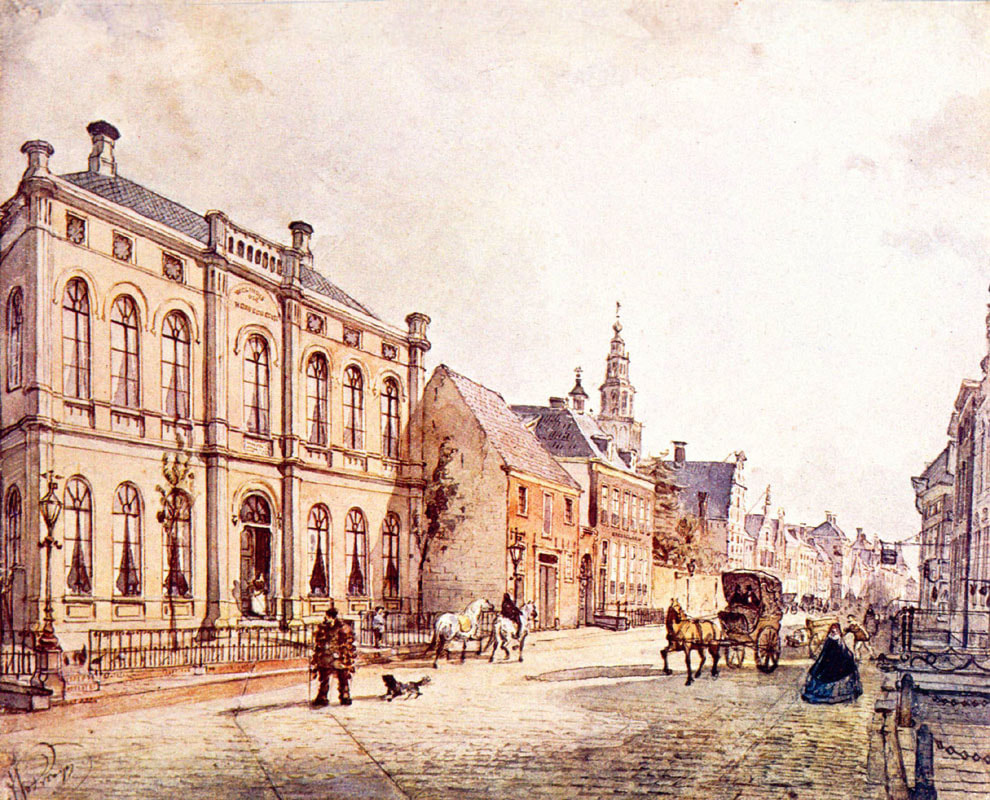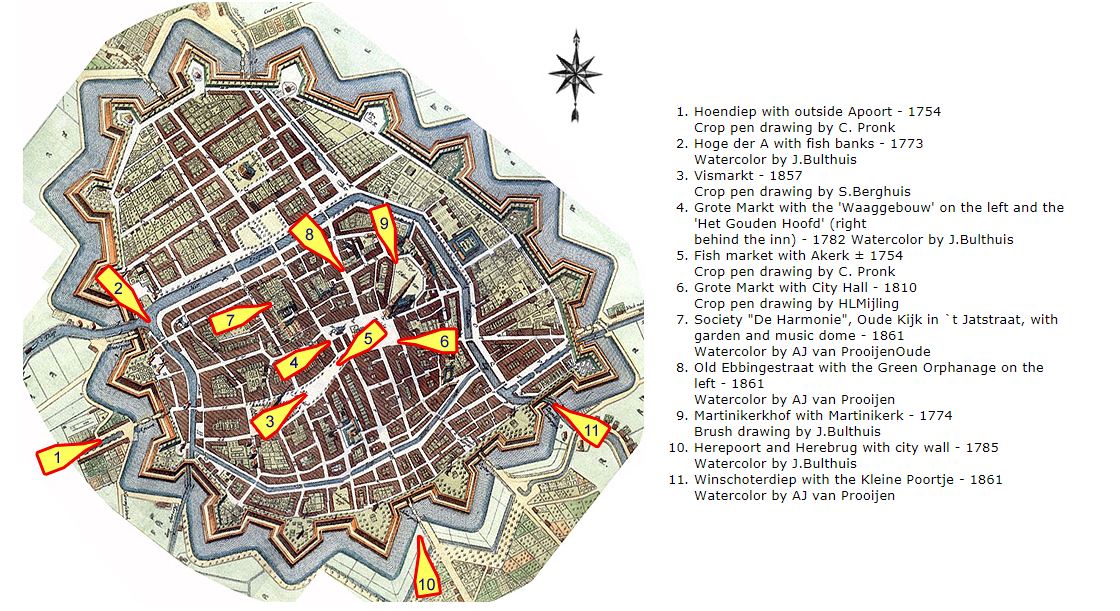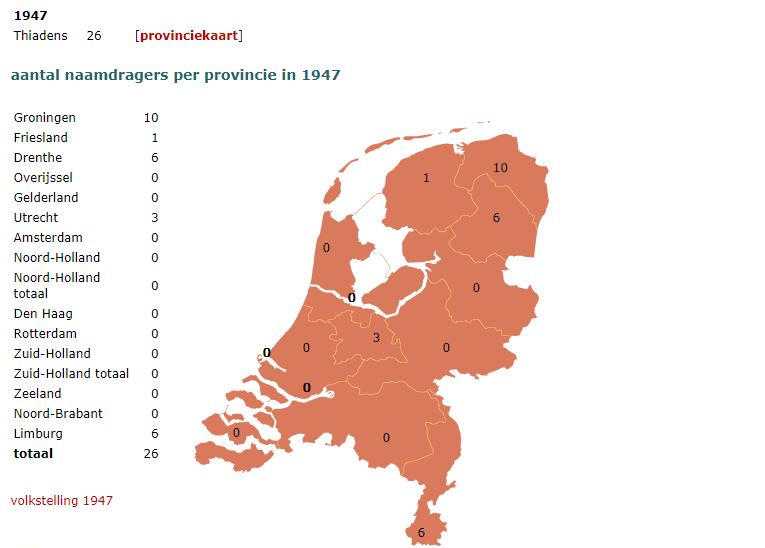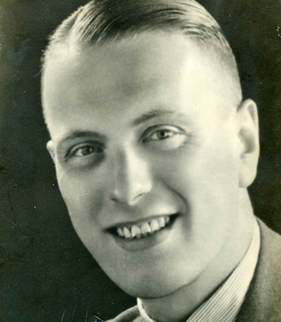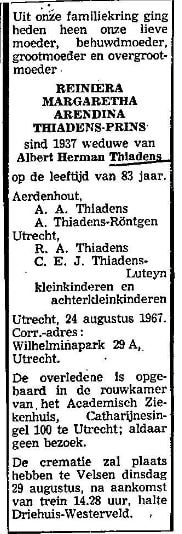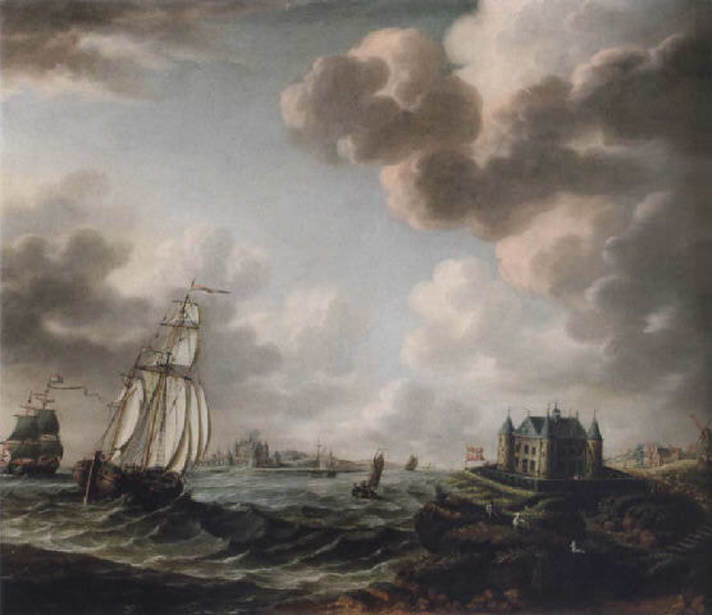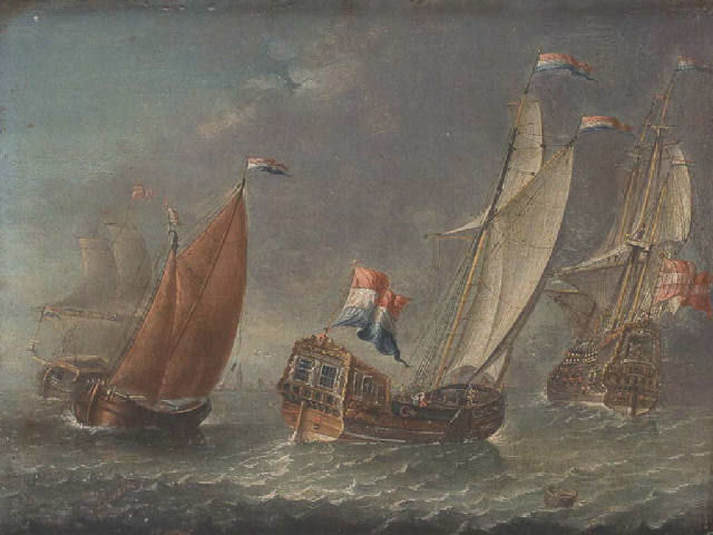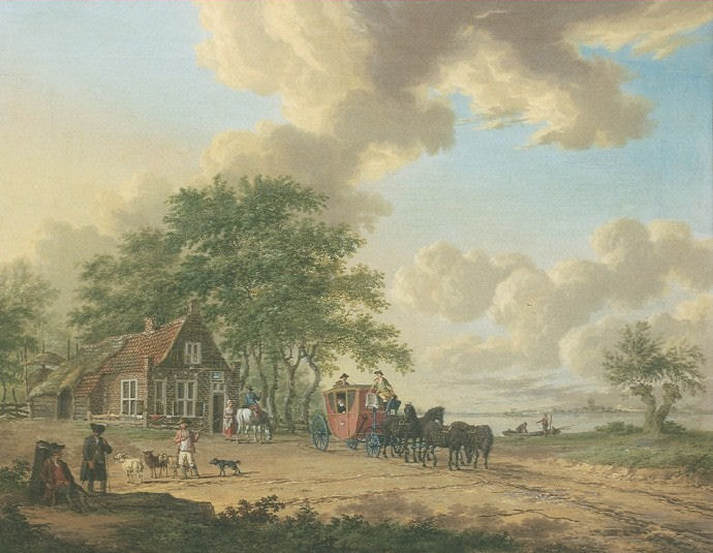|
‘Identity’ has certainly been the buzzword of 2017 and was even the focus of Her Majesty the Queen’s Christmas Speech to the Commonwealth. It is also highly topical in the face of the exponential growth in the number of DNA testing kits that have been sold – with folks looking to discover their ancestral heritage. However, these tests for what Ancestry spuriously call ‘ethnicity estimates’ should really be taken as broad indicators only, the pool of genetic information from which their conclusions are drawn are simply too small to act as a scientific basis on which to base our sense of ‘identity’. They do, nonetheless, illustrate the concept of migration of peoples, tribes and races to create a diverse and interlinked global heritage. Below is my ‘ethnicity estimate’ from Ancestry which whilst a talking point - only a very small proportion of the 66% Western European can realistically be substantiated. What DNA testing is great for is ‘cousin matching’ which helps trace family trees through matching to other descendants of common ancestors. This can be especially helpful when the paper trail has run cold or is not readily ‘accessible’ either geographically, or, if records are written in an unfamiliar language. In order for this to work effectively it is necessary to broaden family trees to include the siblings of direct ancestors and their descendants. Almost putting the family tree in reverse so to speak, by as well as going back in time, going to the side and heading forwards towards the present. To give this December’s blog a ‘festive feel’ that touches on a few of the issues above, I have revisited the family of my Dutch great grandmother Grace Elizabeth (Tissie) Meijer who was born on Christmas Day 1867. Back in February Dutch genealogist John Boeren of Antecedentia, helped get me going in the right direction and shared some of his top tips with us in the blog Going Dutch. Needless to say I have been bending his ear again for this post, and as always he has been an enormous help. Previous research had established that Tissie’s father Hendrikus Petrus van Castel Meijer (HPvCM) had been born at 79 Oude Ebbingstraat, Groningen on the 11th November 1833 to parents Hendrik Lofvers Meijer, a school master, and Elizabeth Houwerzijl his wife. HPvCM was the third of five sons born to the couple and the only one to marry and have any family. The only other family member that followed the matrimonial route was their sister Margaretha Magdalena Elizabeth Meijer born in 1842 and the second of that name, the first having died in March 1839 aged just 6 months. A document called a ‘Memorie van Successie’ was found for the deceased child on the AlleGroningers website relating to her death. ‘A statement of succession is an overview of the income and expenses of an inheritance. This has been made since 1818 because tax on inheritance had to be paid by the heirs’. As such these documents contain the names of all potential heirs, any property, its location, its value and as such can be a useful source of information for family historians. In this instance it showed that HPvCM had a half-brother called Willem Fockens Lofvers Meijer born in 1822 to their father’s first wife Maria Nix who died 4 days after his birth. Willem was a lawyer in Groningen and also unmarried at the time of his death in April 1851. Armed with this information the only potential circa 4th cousins I may have out there will be the descendants of HPvCM’s surviving sister Margaretha who married widower Arend Martens Prins at Groningen in May 1873 and their three daughters. The marriage certificate described Arend as a ‘merchant’ and previous research had shown indications they were involved in shipping and emigration. Arend Prins was the principal partner of the firm of Prins & Zwanenburg which was founded in 1867. It acted as a freight forwarding and immigration agent, recruiting labourers for American railway companies. The company grew to have offices through Europe and the United States. In 1884 Arend’s son by his first marriage Marten W Prins in joint partnership with Theodore F Koch (exporter of Holstein Friesian Cattle) and Nils Frederiksen purchase 34,000 acres of land in Minnesota for $4 an acre which they sold in lots to Dutch and German settlers. Frederiksen was bought out and Marten Prins died in 1886 leaving Theodore Koch as the company’s chief agent. In the ensuing 20 years Koch brokered the sale of over a million acres of land in Minnesota, ‘acting either as Prins and Zwanenberg’s agent or fronting for German investors from the Ruhr valley’. It was quoted by Professor Robert P. Swierenga in his paper of 1997 that ‘The extensive activities of Prins & Zwanenburg in the Netherlands and on the American frontier are only dimly perceived and merit a detailed investigation’ and there are now several informative articles written by Robert Schoone-Jongen including this from the Minnesota Historical Society and ‘Dutch and Dutch Americans’ in the book Immigrants in American History: Arrival, Adaptation, and Integration, Volume 1 from page 333 for those interested in finding out more, including studies into early Dutch ‘identity’ in the United States. However, as Marten Prins and his descendants are not my ‘blood’ relatives, although an interesting diversion, the above does not further my quest for potential DNA matches at 4th cousin level! For that I need to return to the daughters of Arend Prins and Margaretha Meijer, and as Reiniera is an enduring family name, their youngest daughter Reiniera Margaretha Arendina Prins born in Groningen in March 1884 was the line I followed first. In July 1906 she married Albert Herman Thiadens from Utrecht and where the couples’ three sons were born, the eldest Hendrik Arend in June 1907. Another very useful website for Dutch surnames is Nederlandse Familienamenbank which gives the occurrence and geographical spread of surnames in 1947 and 2007 respectively. In 1947 the total number of results for Thiadens was 26 and in 2007 just 58 giving a good indication that the families I was searching could be found. Furthermore, the 1947 return has been allocated to regions, which showed just three for Utrecht, with the remainder mostly clustered in the Northern regions of Groningen, Drenthe and Friesland. It was here that my research took a bit of a sad turn – Hendrik Arend Thiadens (my grandmother’s 2nd cousin) hadn’t made the return having died in Enschede in April 1945. Further searching amongst Dutch War Graves records recorded him as both a Neurologist and a member of the resistance. His memorial reads:
The surname database also came up trumps for the surname Lofvers, with the added benefit of a documentary summary that reached back into the mists of time and the origins of the name. Of the 35 results returned for the 1947 survey 21 were located in the province of Groningen. The summary reads: The ancestor Pieter Jochems Lofvers (Groningen 1712-1788) was first mentioned with this family name in 1748 as a witness at the wedding of his sister, who also had this family name on this occasion. At the time, a family of Loofvers from Switzerland was living in the area (Hoogkerk), but there is no kinship. The name Loofvers is an adaptation of the name Lauffers, who carried this family in Switzerland. It is possible that the name Lofvers has the same origin and in Groningen it was still not used by Peter Jochems' parents and grandparents in the usual patronymic system [GW Nanninga, 'The Groninger painter family Lofvers', in: Gruoninga 1973, p 121-124]. The usual patronymic system in the extract refers to the use of surnames in the period prior to 1811 ‘where the father's first name became the first son's last name, and the other kids got the left over names from the grandfather, great grandfather and so on’. Standardisation of surnames began in the 1600s but from 1811 onwards it was a statutory requirement. Thus Pieter Jochems Lofver’s father was actually called ‘Jochum Pieters’. Confused – this light hearted article might help! The MEB Collections at the CBG in addition to family announcements in the newspapers also hold other resources including family files and photos. They currently hold two such dossiers for the Lofvers family including one for Lofvers Meijer within the Prins family papers. These can be viewed within the reading room of the National Archives in The Hague and if the request is submitted before 12 midday they will be available for consultation the next business day. Although, as these documents will be in Dutch, I shall once again be requiring the services of Dutch colleague John Boeren! For more information on the types of document sources available through CBG see here http://cbgverzamelingen.nl/ Reference to the ‘The Groninger painter family Lofvers’ was too tempting not to investigate further and it seems the family’s biography appears in an almanac similar to the ODNB of which I have only been able to find extracts written in English. Pieter Jochems Lofvers (1712 – 1788) and Hendrik Lofvers (1739 – 1806) of whom a self - portrait hangs in the Groninger Museum were direct Dutch ancestors – 6th and 5th great grandfathers respectively. Both it would seem were artists of some note with Pieter best known for his seascapes and depiction of Whalers. Dutch Old Master Paintings in the New Bedford Whaling Museum which contains examples of his work describes Pieter as: Lofvers lived in the inland town of Groningen, the provincial agricultural marketplace of Friesland, connected to the sea by canals and by long-standing commercial traditions as a Hanseatic port since 1284. But Lofvers himself is not known ever to have been to sea, or ever even to have seen salt water — as three of these paintings reveal through a surfeit of imaginative speculation. However, his depiction on a shoreside tryworks was likely painted from firsthand observation. The ‘tryworks’ referred to in the extract are the whale oil refineries which were land based at that time. Hendrik his son by contrast was known for his landscape painting and portraits, which are valued for their historical depiction of the landscapes of Drenthe and Groningen as ‘they abound with noteworthy details: bridges, cows, rubbing-posts for the cattle made of whale jaws, and pedlars with their carts’. Hendrik was not the only son of Pieter to follow an artistic career, brothers Otto, and Sicco are also mentioned in ‘The Netherlands Institute for Art History’ or RKD listings for artists, along with other members of the family. However, their work also encompassed, sculpture, furniture lacquering, gilding, (apparently they re-gilded the organ in the Martinikerk), teaching, carriage painting, and possibly glass staining, which I suspect may have involved another brother Jacob who is described as a dyer and glassmaker. What perhaps interests me most is the reference to an early patent for the manufacture of wallpaper which was granted in 1738, one of the earliest to be granted by the city of Groningen. Whilst this is not early in terms of wallpaper usage and manufacture - the earliest example in Britain is dated circa 1509 and appears on the reverse of a proclamation made by Henry VIII - I am curious as to the design and format of that produced by the Lofvers' family. Documents and other records are again available for consultation in the RKD Reading Room in The Hague. Once again I have deviated from my original course of action which was to work methodically back through the generations from 4th cousin onwards! Any DNA matches I may have to Pieter or Hendrick Lofvers will be distant – at 6th or 7th cousin level, and I therefore do not recommend that you follow this particular example. However, as anyone who has tested will be aware these distant matches make up the bulk of our results. Armed with the information provided by the surname database and the low number of results for Lofvers, there is a strong possibility that people on the ground today are connected to the first known bearer of the surname. To test the theory I randomly chose the name of a Lofvers death in 1963 and traced it back seven generations when, sure enough, it arrived at Pieter Jochems Lofvers (1712 – 1788) through his son Jacob. Now to add the branches that have descended from the female members of the line, which will of course, bring in a whole new network of surnames, some of which may be lurking within my distant DNA matches. For now research will return to the original plan and methodology, together with planning a trip to The Hague and Groningen in the spring to indulge in a spot of my own #AncestralTourism. NB. If anyone is interested in the family tree of the Thiadens, Prins, Lofvers, Meijer and other connected families that has been compiled as a result of this research - or in indeed they would like to add to it, please do not hesitate to contact me! I would love to hear from you. Useful LinksJohn Boeren - Dutch Genealogist & Family Historian at Antecedentia https://www.findmydutchancestors.com/ WieWasWie - Database of Vital events in the Netherlands. Now also available through Ancestry. https://www.wiewaswie.nl/en/ AlleGroningers - Database provided by the Groningen Archives http://www.allegroningers.nl/introductie CBG - Netherlands Center for Family History Research http://cbg.nl/ Collections at the CBG - http://cbg.nl/bronnen/cbg-verzamelingen/ NB. If using Google Translate it changes CBG to MEB Dutch Family Database - http://www.cbgfamilienamen.nl/nfb/ The Netherlands Institute for Art History - RKD - https://rkd.nl/nl/ Map & Images of the City of Groningen 1700 - 1861
http://members.chello.nl/w.spaak/Spaak/Groningen.htm
1 Comment
Margaret Steenvoorde
31/12/2017 01:06:51 am
Fascinating article Susie. Being married into a Dutch family who have traced their family name back to about 1230, to a family who lived in Huis Steenvoorde, remains of which are in today's district of Rijswijk in The Hague, I found your article really interesting, Many thanks for all the useful links which I shall investigate. The fact that I speak and understand Dutch will be a bonus. I wish you luck with your further research in The Netherlands.
Reply
Leave a Reply. |
AuthorSusie Douglas Archives
August 2022
Categories |
Copyright © 2013 Borders Ancestry
Borders Ancestry is registered with the Information Commissioner's Office No ZA226102 https://ico.org.uk. Read our Privacy Policy
